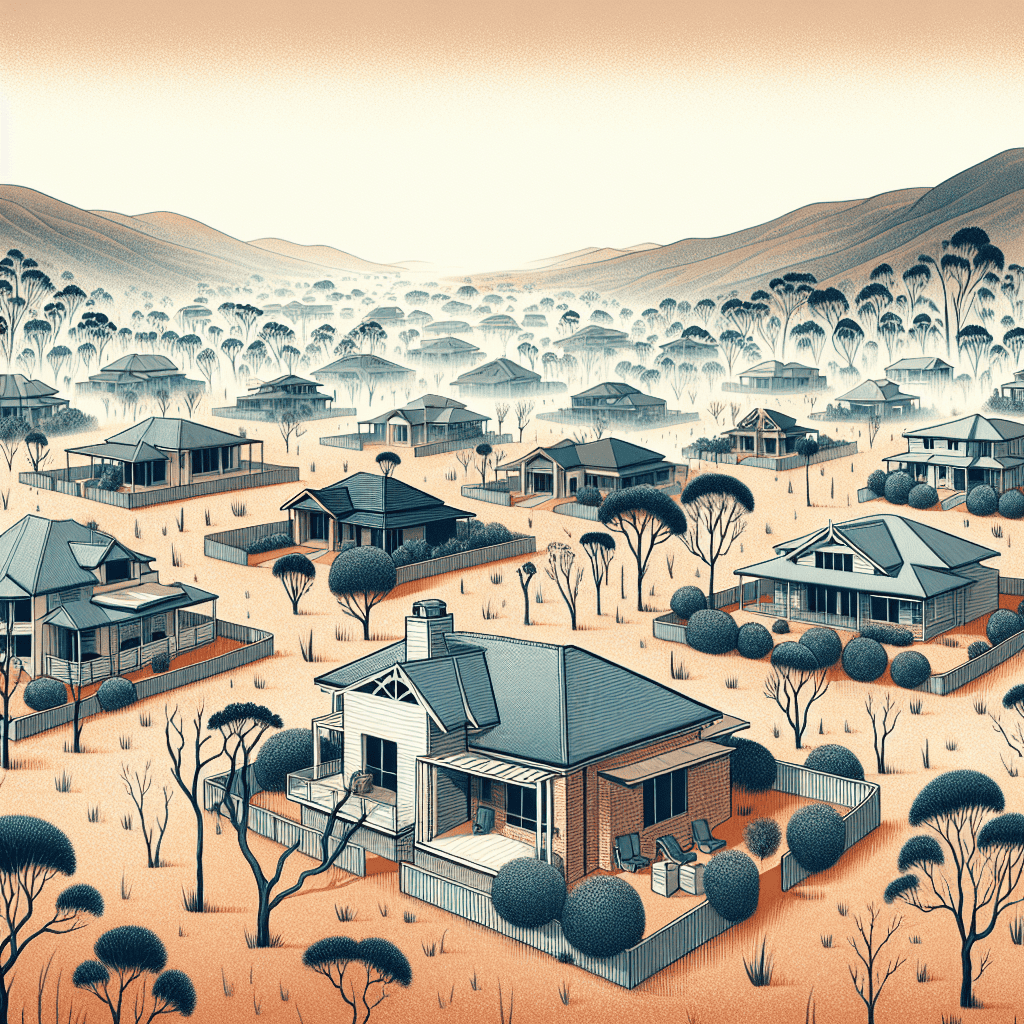With its extreme climate and vast landscapes, Australia has long been synonymous with the ever-present threat of wildfires. However, as suburban sprawl accelerates, communities across the country are finding themselves exposed to increasing risks of bushfires. Rising temperatures, unpredictable weather patterns, and human expansion into fire-prone areas are creating a volatile situation that demands urgent attention and action.
Understanding the Current Wildfire Risk Landscape
Australia is no stranger to wildfires, also known locally as bushfires, but the intensity and frequency of these events have been increasing over the years. The summer of 2019-2020, known as “Black Summer,” is a stark reminder of how catastrophic these fires can become. Over 18 million hectares of land were scorched, thousands of homes were destroyed, and nearly three billion animals were killed or displaced.
While climate change has intensified the severity of fires, another contributing factor is urban expansion. More Australians are moving to outer suburbs, bringing residential areas closer to bushlands. As these suburbs grow, they act as a dangerous interface—dubbed the Wildland-Urban Interface (WUI)—where urban environments meet natural vegetation. The combination of homes, infrastructure, and flammable vegetation creates a tinderbox-like environment, putting both lives and property at risk.
Why Suburban Growth Is Exacerbating the Issue
The expansion into suburban areas comes with a host of challenges that exacerbate the dangers posed by wildfires:
- Increased ignition sources: More homes, vehicles, and infrastructure in bushfire-prone zones heighten the likelihood of fire ignition. Human activities, such as barbecues or discarded cigarette butts, can inadvertently start fires in these vulnerable locations.
- Restricted evacuation routes: Many suburban developments are built with limited ingress and egress, often leaving residents with only one way in and out. This bottleneck can prove deadly during a rapidly escalating wildfire.
- Inadequate fire mitigation planning: As some developers prioritize profits over safety, newly built suburban areas often lack effective firebreaks, water supplies, and access points for firefighting vehicles to navigate.
Additionally, the encroachment into forests and bushlands not only endangers Australians living in these areas but also increases the financial burden on governments, as more resources are needed to prevent and manage fires in residential zones.
The Influence of Climate Change
While suburban expansion is a significant local factor, it is hard to ignore the overarching impact of global climate change. Rising temperatures and extreme weather events are altering the fire risk landscape in dramatic ways:
- Higher temperatures result in drier vegetation, creating more fuel for fires to spread quickly.
- Extended drought periods and delayed seasonal rains amplify the risk of fire-prone conditions.
- Stronger, gustier winds contribute to the speed and unpredictability of how fires spread.
- An elevated frequency of dry lightning strikes serves as natural fire triggers, compounding risks further.
Together, suburban development and climate change form a potent combination that is pushing wildfire risk to unprecedented levels in Australia.
Steps Being Taken to Mitigate Risks
Australian authorities, environmental experts, and community organizations are well aware of the problem and are striving to address it. Governments and private entities have begun implementing various measures intended to reduce the risks associated with wildfires:
1. Legislation and Urban Planning
To manage suburban expansion more responsibly, urban planners now emphasize incorporating fire-resilient layouts in new developments. Local councils are enforcing stricter regulations, requiring:
- Fire-resistant materials in building designs.
- Buffer zones, such as firebreaks, between homes and bushlands.
- Greater accessibility for emergency service vehicles.
Improved zoning laws are also in place, ensuring that high-risk fire areas are not as densely populated, thus reducing loss potential during a large-scale event.
2. Community Awareness Initiatives
Public education campaigns remain a cornerstone of wildfire prevention strategies in Australia. These initiatives aim to raise awareness among residents about how to safeguard their homes and families. Key messages in these campaigns include:
- Creating “defensible space” around homes by clearing vegetation and combustible materials.
- Putting evacuation plans in place to prioritize safety during emergencies.
- Using the government’s “Fires Near Me” app to stay updated on local threats.
Social media platforms and community fire drills have also been used to great effect in improving readiness to tackle fire emergencies.
3. Advancements in Firefighting Technology
State and federal governments continue to invest in advanced firefighting technologies to mitigate damage from wildfires. These innovations include:
- Drones: Equipped with thermal imaging cameras, drones are used to detect and monitor fire hotspots more precisely, even in rugged terrains.
- Aerial firefighting aircraft: Seen as a game-changer, planes and helicopters can quickly deliver water or fire retardants to suppress fires.
- Fire prediction software: Simulations powered by artificial intelligence are now becoming critical tools to predict the spread of fires and chart effective response plans.
What Can You Do to Protect Yourself?
As wildfires become more frequent and intense, individual action is as important as government intervention. Here are some ways Australians can protect themselves and their properties:
- Keep gutters clean and free from leaves or dry debris that could spark a fire.
- Install ember-proof screens on windows and vents.
- Prepare an emergency supply kit, including essentials like water, non-perishable food, medications, and important documents.
- Discuss evacuation plans with family members and practice them regularly.
By staying proactive and well-prepared, individuals and families can significantly improve their chances of survival should a wildfire occur.
Conclusion
Australia’s growing suburbs present an intricate challenge: balancing the need for residential expansion with the imperative of wildfire risk management. As climate change renders extreme weather patterns the new normal, it is critical for governments, communities, and individuals alike to work together to mitigate the dangers of wildfires. Through a combination of urban planning reforms, technological advancements, and public education, progress is being made to protect both lives and property across the nation.
However, with fire seasons becoming longer and more severe, this is a race against time. Adopting preventive measures now will not only save lives but could also shape a safer future for Australians and their cherished landscapes.
“`


